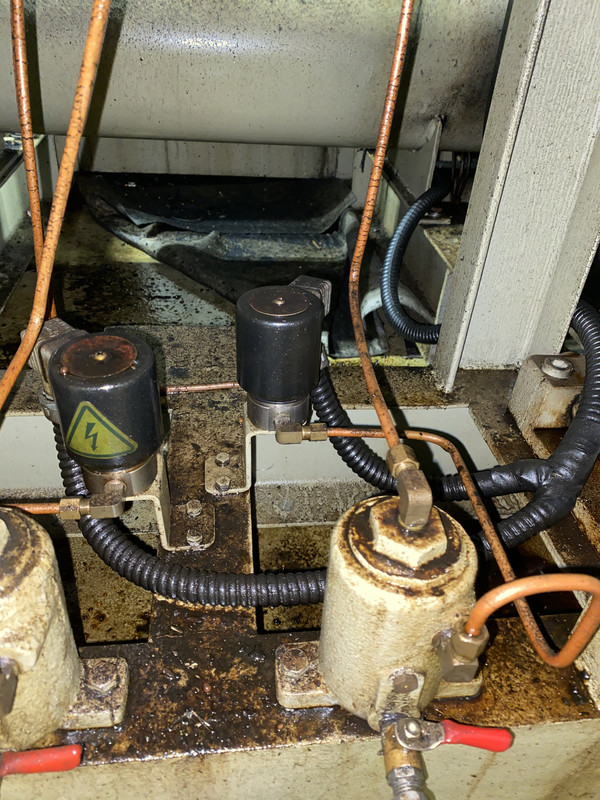I have a customer that has a large commercial air compressor. It has 4 motors and 4 compressor heads and a large control cabinet. Originally, the pressure switch would kick the compressor out but leave the motor running so it wasn't starting and stopping so much. They had someone come work on it. He replaced the pressure switch and then added a contactor so rather than the compressors not compressing air anymore, it just starts and stops the motor like on most compressors. Had anyone had any experience with this type of thing? They want me to make it work like it originally did but I'm not sure how it is supposed to work. I'm trying to get some pictures that I can upload but they're too big so I have to compress them.
From what I can see, there are solenoids that have copper tubing going in one side (not currently sure where that comes from) and another copper tube that goes out the other side and connects to each of the compressor heads. I haven't worked on a compressor that disconnects or shuts down the compressor portion and leaves the motor running continuously. I thought there would maybe be an external clutch somewhere that would engage and disengage the compressor but don't see anything like it. Has anyone ever worked on one of these and knows how it's supposed to stop the compressor from compressing air rather than shutting the whole unit down?
Thank you.
From what I can see, there are solenoids that have copper tubing going in one side (not currently sure where that comes from) and another copper tube that goes out the other side and connects to each of the compressor heads. I haven't worked on a compressor that disconnects or shuts down the compressor portion and leaves the motor running continuously. I thought there would maybe be an external clutch somewhere that would engage and disengage the compressor but don't see anything like it. Has anyone ever worked on one of these and knows how it's supposed to stop the compressor from compressing air rather than shutting the whole unit down?
Thank you.


